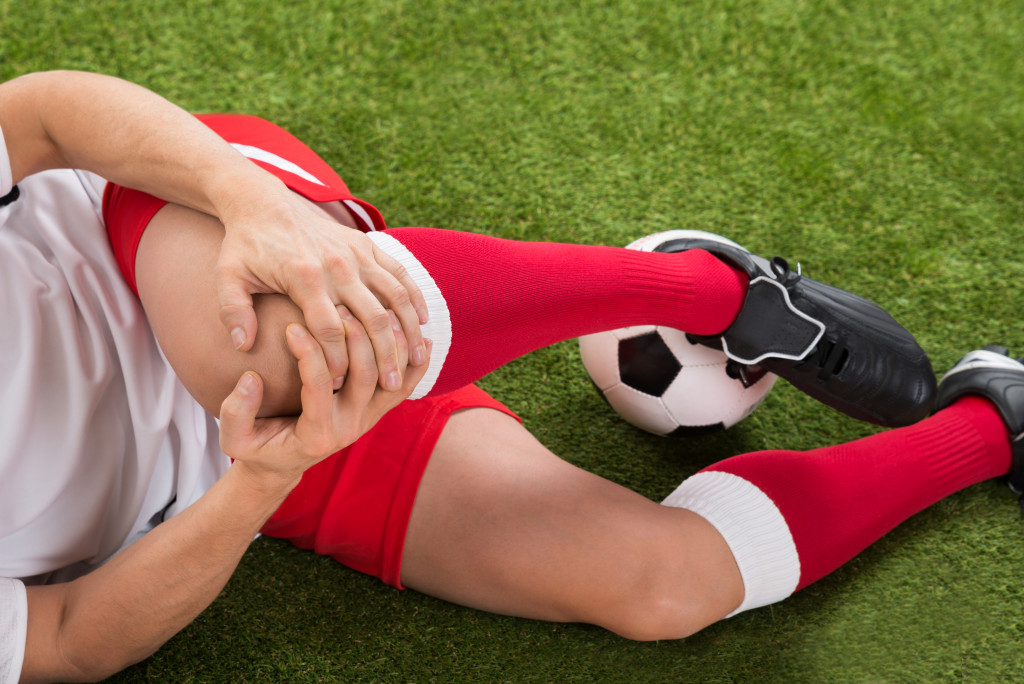Playing sports is a great way to stay physically active and have fun. However, certain sports come with a higher risk of injury than others. It’s important to know which marks are more likely to cause injuries so that you can take steps to prevent them.
In addition, taking safety measures is the best way to avoid getting injured while playing In this article, we will discuss the most common sports-related injuries and how to prevent them.
Sports-related injuries
Injuries are a common occurrence in many sports. But some of them are more severe than others. Some of the most common types of injuries include:
Jaw injury
One type of injury that can occur during sports participation is a jaw injury. The most common type of jaw injury is a fracture, which can occur on the upper or lower jaw. Treatment for a jaw fracture typically involves wearing a splint or surgical fixation with wires or plates. In some cases, orthognathic or jaw surgery may be necessary to align the bones correctly.
Another type of jaw injury that could have been caused by sports is known as TMJ or temporomandibular joint dysfunction. This occurs when the muscles and ligaments that connect the lower jaw to the skull become overstretched or inflamed. Treatment for TMJ typically involves avoiding foods that are hard to chew, using heat and cold therapy, and taking over-the-counter pain medication. In severe cases, orthognathic surgery may be necessary to correct the alignment of the lower jaw. Jaw injuries can be painful and debilitating, so it is vital to seek medical attention if you think you may have injured your jaw.
Ankle sprain

Ankle sprains are one of the most common sports-related injuries, particularly among athletes who participate in field sports such as soccer and basketball. The ankle is a complex joint made up of several bones, ligaments, and tendons, all of which work together to allow the ankle to move in multiple directions. However, this complexity also makes the ankle susceptible to injury. A sprain occurs when one or more of the ligaments that support the ankle is stretched or torn.
Most ankle sprains occur when the foot turns inward (known as an inversion sprain), which can happen when the ankle rolls over on an uneven surface. Symptoms of a sprain include pain, swelling, and bruising. While minor sprains may only require rest and ice, more severe sprains may need to be treated with immobilization, physical therapy, and even surgery.
Achilles tendon rupture
An Achilles tendon rupture is a complete or partial tear of the Achilles tendon, the sizeable rope-like band of tissue that connects the calf muscle to the heel bone. Achilles tendon ruptures are most common in athletes participating in sports that involve sudden stops and starts, such as basketball, tennis, and football. However, anyone can be at risk for an Achilles tendon rupture, particularly if they have a history of Achilles tendonitis or overuse injuries.
An Achilles tendon rupture includes sudden pain in the back of the leg or ankle, a snapping or popping sensation, swelling, and bruising. If you think you may have ruptured your Achilles tendon, it is essential to seek medical attention immediately. Treatment options typically include surgery or immobilization. Most people can recover fully from an Achilles tendon rupture with proper treatment. However, untreated or poorly managed breaks can lead to long-term pain and disability.
An anterior cruciate ligament (ACL) tear
One of the most common sports-related injuries is the ACL tear. The ACL is a ligament that runs through the middle of the knee and provides stability. It can be torn when the knee is suddenly twisted or hyperextended. ACL tears are prevalent in contact sports such as football and hockey. Still, they can also occur in non-contact sports such as basketball and soccer.
Symptoms of an ACL tear include sudden pain, swelling, and loss of range of motion. Treatment typically involves surgery to repair the ligament, followed by physical therapy. Occasionally, an ACL tear can lead to long-term problems such as instability and arthritis. For this reason, seek medical attention as soon as possible if you suspect you have injured your ACL.
Hamstring strain
Hamstring strains are a common sports-related injury, particularly among athletes who participate in running or jumping activities. A hamstring is a group of three muscles running along the thigh’s back. These muscles can be easily strained during high-impact activity. Symptoms of a hamstring strain include pain, bruising, and muscle weakness.
In severe cases, the muscle may completely tear away from the bone. Treatment for a hamstring strain typically involves rest, ice, and physical therapy. Surgery may be necessary in some cases. Preventing hamstring strains can be achieved by warming up properly before exercise and regularly stretching the muscles.
Final thoughts
Your safety is paramount, whether you’re a casual athlete or a professional. Be sure to warm up properly and stretch before participating in any physical activity. And if you do suffer an injury, be sure to seek medical attention as soon as possible. Early diagnosis and treatment can help you recover more quickly and avoid long-term complications.

